When it comes to adding exotic and vibrant plants to your home or garden, few options are more eye-catching than bromeliads. As a family of plants, bromeliads encompass a wide range of types, each with its unique characteristics and growing requirements. From the stunning flowers of the Aechmea genus to the air plants of the Tillandsia genus, there’s no shortage of variety when it comes to the types of bromeliads available.
In this blog, we’ll take a closer look at the fascinating world of bromeliads and explore some of the different types of bromeliads you may encounter. We’ll discuss the features that make each type of bromeliad unique, as well as some general growing tips that can help you care for these beautiful and sometimes unusual plants. So, whether you’re a seasoned bromeliad enthusiast or simply curious about the world of tropical plants, read on to discover the many fascinating types of bromeliads that are out there.

Contents
- 1 Types Of Bromeliads
- 1.1 Acanthostachys
- 1.2 Aechmea
- 1.3 Alcantarea
- 1.4 Ananas
- 1.5 Androlepis
- 1.6 Araeococcus
- 1.7 Barfussia
- 1.8 Billbergia
- 1.9 Brocchinia
- 1.10 Bromelia
- 1.11 Canistropsis
- 1.12 Canistrum
- 1.13 Catopsis
- 1.14 Cipuropsis
- 1.15 Connellia
- 1.16 Cottendorfia
- 1.17 Cryptanthus
- 1.18 Deinacanthon
- 1.19 Deuterocohnia
- 1.20 Disteganthus
- 1.21 Dyckia
- 1.22 Edmundoa
- 1.23 Encholirium
- 1.24 Fascicularia
- 1.25 Fernseea
- 1.26 Forzzaea
- 1.27 Fosterella
- 1.28 Glomeropitcairnia
- 1.29 Goudaea
- 1.30 Gregbrownia
- 1.31 Greigia
- 1.32 Guzmania
- 1.33 Hechtia
- 1.34 Hohenbergia
- 1.35 Hohenbergiopsis
- 1.36 Hoplocryptanthus
- 1.37 Hylaeaicum
- 1.38 Jagrantia
- 1.39 Karawata
- 1.40 Lapanthus
- 1.41 Lemeltonia
- 1.42 Lindmania
- 1.43 Lutheria
- 1.44 Lymania
- 1.45 Navia
- 1.46 Neoglaziovia
- 1.47 Neoregelia
- 1.48 Nidularium
- 1.49 Ochagavia
- 1.50 Orthophytum
- 1.51 Pitcairnia
- 1.52 Portea
- 1.53 Pseudalcantarea
- 1.54 Puya
- 1.55 Quesnelia
- 1.56 Racinaea
- 1.57 Renealmia
- 1.58 Rokautskyia
- 1.59 Ronnbergia
- 1.60 Sincoraea
- 1.61 Tillandsia
- 1.62 Ursulaea
- 1.63 Vriesea
- 1.64 Wallisia
- 1.65 Werauhia
- 1.66 Wittmackia
- 1.67 Zizkaea
Types Of Bromeliads
Acanthostachys
Acanthostachys is a genus of the Bromeliaceae family, with three known species that are all found in South America. The name of the genus comes from the Greek words for thorny and flower spike. The three species are Acanthostachys pitcairnioides, Acanthostachys calcicola, and Acanthostachys strobilacea, with each having a specific distribution in Brazil, Paraguay, Argentina, and Northeast Brazil.


Aechmea
Aechmea is a genus of bromeliads that contains 255 different species originating from Central and South America. They have adapted to grow in a variety of environments, from moist, shady forests to arid regions. Aechmeas have sharp spines along the margins of their leaves and are often sold as potted plants, although they are typically epiphytic in the wild. Their roots act as an anchor, and they take in water and nutrients from their environment. Aechmeas are easy to care for and offer a great variety in color, foliage, and growth habits, rewarding their owners with long-lasting inflorescence.



Alcantarea
Alcantarea is a large growing bromeliad that makes a statement in the garden. With foliage up to 6.5 feet tall and 5 feet wide, it’s perfect for full-sun to part-shade conditions in a large container or any part of the garden needing instant impact. The most popular variety is Alcantarea imperialis ‘Rubra’, with green-grey foliage flushed with red, which can deepen to maroon in cooler climates. Alcantarea is a favorite of landscape designers when paired with cordylines, heliconias, gingers, or aloes. It’s also tough and works well on balconies and near swimming pools.
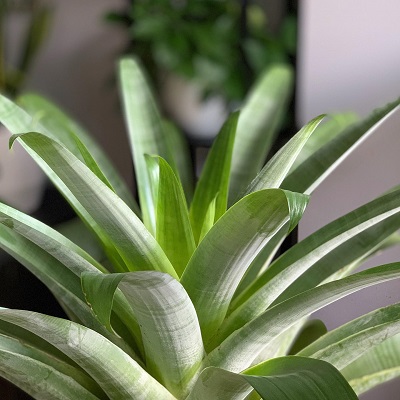


Ananas
Ananas, also known as pineapple, is a tropical plant that is native to South America. This plant is grown for its fruit, which is a popular ingredient in many cuisines around the world. Pineapple plants have long, narrow leaves that grow in a rosette pattern. They also produce a colorful inflorescence that can be red, purple, or yellow. Pineapple plants can be grown indoors or outdoors, depending on the climate. They prefer bright, indirect light and should be watered regularly.


Androlepis
Androlepis is a type of epiphyte in the Bromeliaceae family that grows in Central America and southern Mexico. It belongs to the Bromelioideae subfamily and is named after the Greek words for “man” and “scale.”


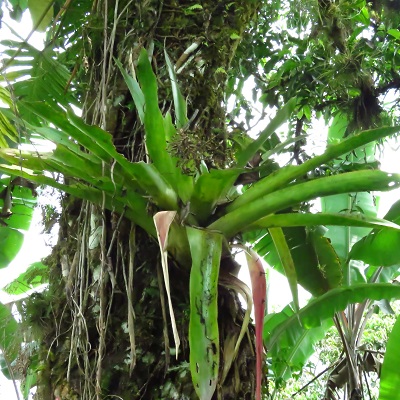
Araeococcus
Araeococcus is a genus of the Bromeliaceae family, found in northern South America, Central America, and Trinidad. The name comes from Greek and Latin roots meaning “thin berry.” It was previously divided into two subgenera before one became the separate genus Pseudaraeococcus in 2020.



Barfussia
Barfussia is a genus of flowering plants in the Bromeliaceae family, native to Western South America. There are three known species: Barfussia laxissima, Barfussia platyrhachis, and Barfussia wagneriana.
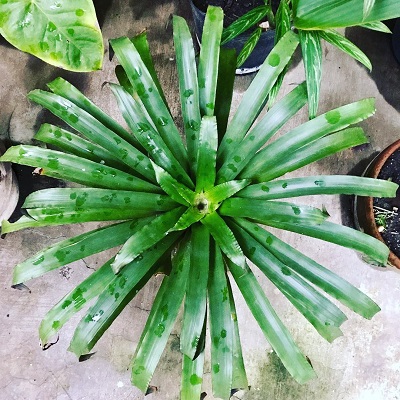


Billbergia
Billbergia is a genus of about 60 species of bromeliads native to Brazil, but found from central Mexico to northern Argentina. They are primarily epiphytic but can grow terrestrially. Billbergia can tolerate a wider range of temperatures than many other bromeliads, withstanding temperatures down to 26 degrees Fahrenheit for short periods of time. They are an ideal choice for outdoor landscapes in moderate climates, with a preference for a 10-15 degree temperature drop at night for optimal growth and color.
The genus is divided into two subgenera, with billbergia being the most commonly found in cultivation. The difference between the two subgenera can be seen in their flowers, with billbergia petals bending back slightly at the tips. Billbergia were first introduced in the United States in 1897 but gained popularity in the 1940s through hybridization by Mulford Foster. They can now be found in home collections and landscapes throughout the country.

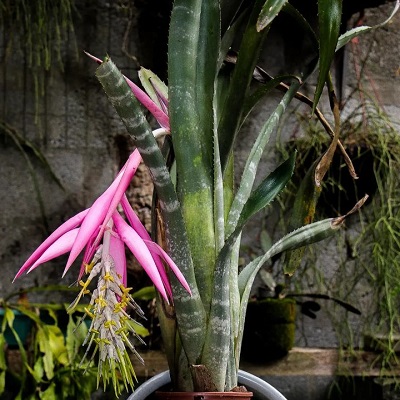

Brocchinia
Brocchinia is a genus of plants in the Bromeliaceae family, containing 20 species that are native primarily to the Guayana Shield in southern Venezuela and Guyana, with some species extending into Colombia and northern Brazil. It is the only genus in the subfamily Brocchinioideae. The genus is named after Italian naturalist Giovanni Battista Brocchi.
Brocchinia is thought to have diverged from other bromeliads nearly 20 million years ago and has undergone spectacular adaptive radiation in mechanisms of nutrient capture, apparently in response to the infertile, heavily leached substrates of the Guayana Shield. Some species, such as Brocchinia reducta and B. hechtioides, appear to be carnivorous.



Bromelia
Bromelia is a genus of around 70 plant species found throughout Latin America and the West Indies. They have sword-like leaves that form a protective barrier due to their sharpness. The flowers have a cleft calyx and are very colorful. The genus is named after Olof Bromelius, a Swedish doctor and botanist.



Canistropsis
Canistropsis is a genus of plants in the Bromeliaceae family, found in the Atlantic Forest biome of southeastern Brazil. There are 11 species in total, all of which are endemic to the region. The name of the genus is derived from Canistrum and the Greek ‘opsis’.



Canistrum
Canistrum is a genus of plants in the Bromeliaceae family, with 22 recognized species found in the Atlantic Forest biome of southeastern Brazil. The genus name is derived from the Greek word for a basket carried on the head. The plants are divided into two subgenera: Canistrum and Cucullatanthus Leme.



Catopsis
Catopsis is a genus of epiphytic bromeliads found in Florida and throughout Central and South America. With only eighteen species, these air plants often grow high in trees and have adapted to their environment by having vase-like rosettes that trap debris and water. Catopsis berteroniana is a notable species, nicknamed the jungle lantern for its iridescent yellow color and carnivorous tendencies. While it is debated whether or not this plant is truly carnivorous, insects are an important part of its diet, trapped in the central urn where they decompose and provide nutrients.



Cipuropsis
Cipuropsis is a type of flowering plant in the Bromeliaceae family that is found in the Caribbean, southern Central America, and northwestern South America. It was first described by Ule in 1907.

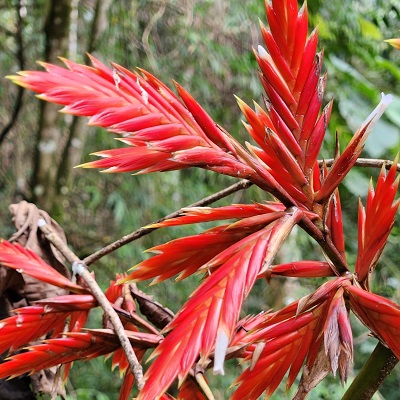

Connellia
Connellia is a genus of plants in the Bromeliaceae family, with 6 known species native to the Guyana Highlands of Guyana and Venezuela. These plants are not found in cultivation and belong to the Pitcairnioideae subfamily. They are terrestrial and resemble a Puya. The genus is named after English ornithologist and biologist Frederick Vavasour McConnell, who lived from 1868 to 1914.



Cottendorfia
Cottendorfia is a genus of plants in the Bromeliaceae family, named after a German patron of the sciences. It consists of only one species, Cottendorfia florida, which is native to northeastern Brazil. These terrestrial plants grow in rocky areas and are not commonly cultivated.
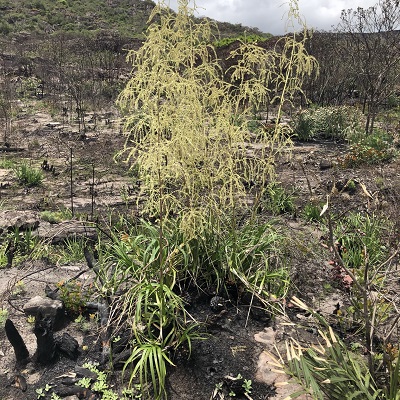
Cryptanthus
Cryptanthus, also known as Earth Star, is a genus of flowering plants in the Bromeliaceae family that is native to Brazil. The plant has a flat rosette of leaves that can grow up to two feet across and come in shades of red, green, white, and pink. Cryptanthus is typically grown for its striking foliage, which can have striped patterns, and produces small white or pink blooms that are tubular and remain hidden in the middle of the rosette. The plant requires humid environments, temperatures around room temperature, and fertilization for optimal growth.
There are over 1,200 types of bromeliads within the Cryptanthus genus, each with unique foliage patterns and colors. The plant blooms only once before producing offsets and dying. It may take several years for the plant to bloom. Different species within the genus have varying care requirements, but all thrive in humid environments with temperatures around room temperature.



Deinacanthon
Deinacanthon is a type of flowering plant that belongs to the Bromeliaceae family. It consists of only one species, Deinacanthon urbanianum, which is naturally found in Bolivia, Paraguay, and Argentina. The name of the genus suggests that the flower has a menacing appearance, although no further details on its physical characteristics were provided.

Deuterocohnia
Deuterocohnia is a type of plant found only in South America, belonging to the Bromeliaceae family and subfamily Pitcairnioideae. It is named after Ferdinand Julius Cohn, a Jewish botanist and bacteriologist.
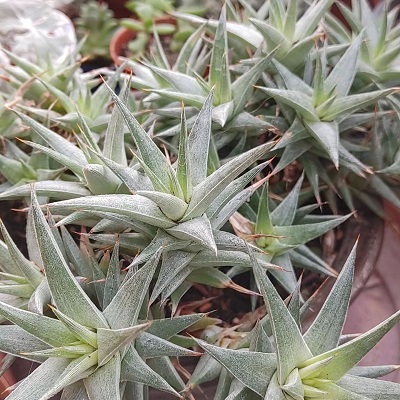


Disteganthus
Disteganthus is a type of plant in the Bromeliaceae family, with three known species found in northeastern South America. They are considered primitive among bromeliads and only grow in terrestrial environments. The name comes from the Greek words for “two,” “covering,” and “flower.”



Dyckia
Dyckia is a genus of plants in the family Bromeliaceae, subfamily Pitcairnioideae, with 120 species and many cultivars. They have stiff and thorny leaves, prefer rocky and sunny areas up to 6,000 feet in elevation, and are native to Brazil, Uruguay, Paraguay, and Bolivia. They are unique among bromeliads for their ability to survive cold temperatures, with some species tolerating temperatures in the teens. Dyckias are often mistaken for succulents due to their drought tolerance and leathery leaves, but they cannot store water internally and simply go dormant during dry periods.



Edmundoa
Edmundoa is a genus of plants in the Bromeliaceae family, found in southern and south-eastern Brazil. The genus is named after Brazilian botanist Edmundo Pereira and was previously grouped with Canistrum. It was recognized as an independent genus by Elton Martinez Carvalho Leme in 1997.


Encholirium
Encholirium is a genus of plants in the Bromeliaceae family found only in Brazil. They grow in arid rocky areas and some species are limited in number and being conserved. These plants are often mistaken for Dyckia and have been observed being pollinated by bats. The genus name comes from the Greek words for spear and lily.



Fascicularia
Fascicularia is a genus of flowering plants in the pineapple family, with only one known species, Fascicularia bicolor. Indigenous to Chile, it is also found in France and Great Britain. Cultivated for its bright crimson leaves and blue inflorescence, it has wide-spreading deep green leaves in circular rosettes and produces bright blue flowers with orange stamens and white bracts. It is a stunning addition to gardens during the summer months and produces small edible fruits.

Fernseea
Fernseea is a genus of plants in the family Bromeliaceae, subfamily Bromelioideae, with two known species, both found only in Brazil. The genus was named after Dr. Heinrich Ritter Wawra von Fernsee, a botanist and physician from Vienna, by John Gilbert Baker.


Forzzaea
Forzzaea is a genus of plants in the family Bromeliaceae, native to the Atlantic coastal forest of Brazil. It was described in 2017 and currently includes seven accepted species.


Fosterella
Fosterella is a genus of bromeliads in the family Bromeliaceae, subfamily Pitcairnioideae. It was established in 1960 and contains 31 recognized species, primarily found in arid to semi-humid lowlands and foothills of the Andes in South America, with one exception found in southern Mexico. The plants are terrestrial and live on open forest floors, with broad flat leaves that are often discolor and flowers that grow on a stalk above the plant. Fosterella is named after Mulford B. Foster, an American horticulturist and collector.
While few Fosterella are considered exceptionally beautiful, they are easy to care for and produce pups generously, making them ideal for quickly filling hanging baskets or containers. The leaves are usually bright green on the top side and purple or burgundy on the bottom side. The flowers, which are typically small and bell-shaped, hang down from the stalk and are usually white or yellow, occasionally pink. Some Fosterella flower stalks can grow quite tall.



Glomeropitcairnia
Glomeropitcarnia is a genus of the Bromeliaceae family, subfamily Tillandsioideae, with two known species native to Venezuela, Trinidad, and the Lesser Antilles. They are noted for their ability to store up to five gallons of water, making them an important source of water for other biota, including the El Tucuche Golden Tree Frog.


Goudaea
Goudaea is a genus of flowering plants in the Bromeliaceae family, native to Trinidad, Bolivia, Colombia, and Peru. The genus is named after Dutch botanist Eric Gouda, who specializes in Bromeliaceae. Two known species of Goudaea are Goudaea chrysostachys and Goudaea ospinae.


Gregbrownia
Gregbrownia is a genus of flowering plants in the Bromeliaceae family, native to Ecuador and northern Peru. The genus was named after American botanist Gregory K. Brown and was first described in 2016. There are four known species: brownii, fulgens, hutchisonii, and lyman-smithii.


Greigia
Greigia is a genus of plants in the Bromeliaceae family, found throughout Latin America from Mexico to Chile. There are 28 species of these large terrestrial plants, which are unique among bromeliads as they continue to bloom every year from the same rosette instead of dying after flowering. However, they are rare in cultivation as they grow in cool, moist cloud forests at elevations of 2500-4000 meters and are difficult to grow at low elevations. The genus is named after Major General Samuel Alexjewitsch Greig, president of the Russian Horticultural Society in 1865.



Guzmania
Guzmania is a genus of over 120 species of flowering plants in the family Bromeliaceae, native to Florida, the West Indies, Mexico, Central America, and South America. They are mainly stemless, evergreen, epiphytic perennials that can grow up to 3,500 m (11,483 ft) in the Andean rainforests. The popular Guzmania lingulata (scarlet star) is often cultivated as an indoor or outdoor garden plant and can be propagated from offsets. Guzmanias require warm temperatures, high humidity, and a well-draining potting mix to avoid fatal root rot caused by fungal infections.
Most Guzmania are epiphytes, meaning they attach to a host plant and do not grow in the ground. They are often found in public indoor spaces but can be planted in a porous potting mix using peat moss, vermiculite, and bark. Proper watering techniques are important to avoid root rot, and heavy rocks in the bottom of the container can prevent the plant from toppling. Guzmania comes in many shapes, sizes, and colors, with striking bracts that can be red, yellow, orange, or deep purple. They collect rainwater and receive nourishment from decomposing leaves and droppings from animals in their natural environment.



Hechtia
Hechtia is a genus of bromeliads that contains 75 species and is native to Mexico, Central America, and Texas. These small plants have thick, waxy leaves that radiate from a central point in a rosette. They can be grown in sandy, rocky soil and prefer bright, sunny deserts. Hechtia can tolerate colder temperatures than other bromeliads, down to 20 degrees Fahrenheit, and can survive in both extremely hot and cold temperatures for short periods of time. They can grow up to 5 feet in width and have a flower stalk of 8 feet in height. Hechtia flowers are imperfect, either male or female and can flower multiple times.

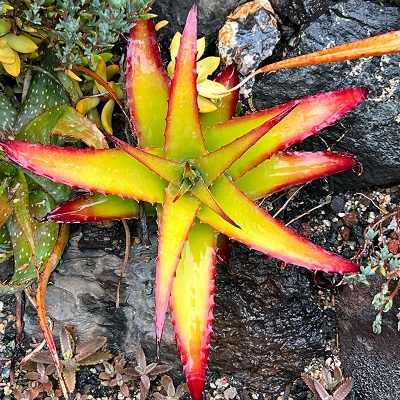

Hohenbergia
Hohenbergia is a genus of bromeliad with about 52 species. They are closely related to Achmea and are native to Jamaica, tropical islands, and parts of South America. Hohenbergia has broad strap-like leaves that form a tight rosette shape and can range in habitat from sandy, dry areas to humid cloud forests. They produce a tall, branched flower spike that distinguishes them from Achmea. Hohenbergia can be grown as epiphytic plants, meaning they grow attached to a substrate, or terrestrially, and can be attractive in containers. They produce only a single inflorescence that can last several months, and then die, but they generously produce offshoots called pups that can be replanted.
While Hohenbergia has attractive foliage and flowering, there are not many varieties found in cultivation, and some species can be difficult to grow due to their size. It can take up to 5 years for some Hohenbergia to reach maturity and produce a flower. However, a few species and cultivars can be found in specialty bromeliad retailers. Overall, Hohenbergia are beautiful plants that can be grown both epiphytically and terrestrially, and their offshoots make them easy to propagate.



Hohenbergiopsis
Hohenbergiopsis is a plant genus in the Bromeliaceae family with only one known species, Hohenbergiopsis guatemalensis, found in Oaxaca, Chiapas, and Guatemala. The genus name is derived from Hohenbergia and the Greek opsis, meaning “resembling.”

Hoplocryptanthus
Hoplocryptanthus is a genus of flowering plants in the Bromeliaceae family, previously considered a subgenus of Cryptanthus. It is native to Southeastern Brazil and consists of nine species.


Hylaeaicum
Hylaeaicum is a genus of flowering plants in the Bromeliaceae family found in tropical northern South America. It was first described as a subgenus of ‘Aregelia’ in 1935 before being treated as a subgenus of Neoregelia and finally raised to a full genus in 2021. The genus has 12 accepted species.


Jagrantia
Jagrantia is a genus of flowering plants in the Bromeliaceae family, containing only one species, Jagrantia monstrum. It is native to southeastern Nicaragua to northern Ecuador and is found in Colombia, Costa Rica, Ecuador, Nicaragua, and Panama. The genus name honors American botanist Jason Randall Grant, while the specific epithet “monstrum” refers to a malfunctioning of nature, from which the word monster is derived.
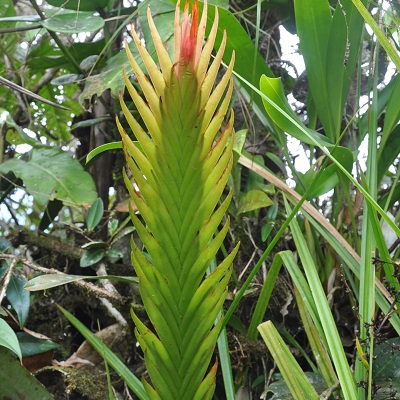
Karawata
Karawata is a genus of flowering plants in the Bromeliaceae family, originating from eastern Brazil. The genus was first described in 2019 and includes seven accepted species. The plants have colorful flowers.
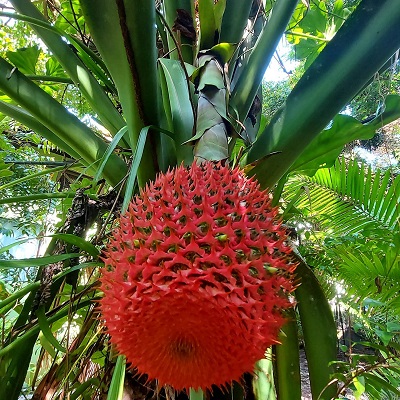
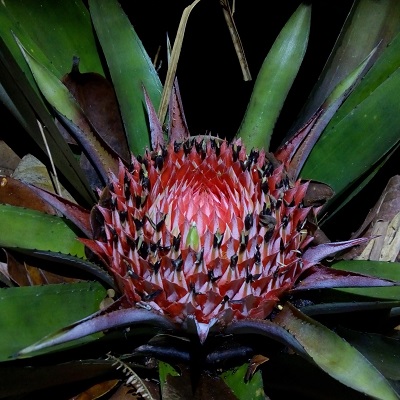
Lapanthus
Lapanthus is a type of flowering plant in the Bromeliaceae family. It is native to Minas Gerais, Brazil.

Lemeltonia
Lemeltonia is a genus of flowering plants in the Bromeliaceae family found in Central America to north-western Peru and Trinidad, as well as in countries such as Belize, Brazil, Colombia, and Venezuela. It was named after Brazilian botanist Elton Martinez Carvalho Leme and was first described in 2016.
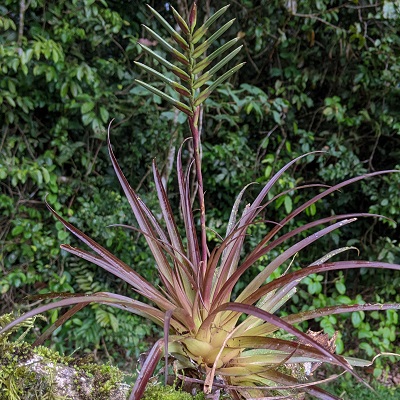


Lindmania
Lindmania is a plant genus in the Bromeliaceae family, with 39 species, all but one of which are native to Venezuela and a few in neighboring Guyana and northern Brazil. The genus is named after Carl Axel Magnus Lindman, a Swedish botanist.

Lutheria
Lutheria is a type of perennial plant in the bromeliad family that is found in The Neotropics.


Lymania
Lymania is a genus of plants in the family Bromeliaceae, subfamily Bromelioideae, named after American botanist Lyman Bradford Smith. It was established in 1984 to unite species from Aechmea subgenera Lamprococcus, Araeococcus, and Ronnbergia. The plants are endemic to the Bahian coast of the Brazilian rainforest and consist of two distinct clades. There are ten accepted species.
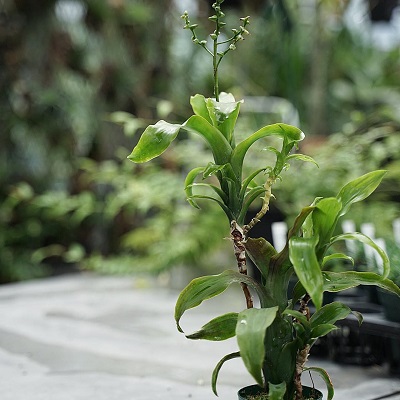


Navia is a genus of 95 bromeliad species native to northern South America, including Guyana, Suriname, Venezuela, Colombia, and northern Brazil. These plants are commonly cultivated for their colorful foliage and inflorescences and can grow up to 60 cm in diameter. They can be found growing on moist ledges or dry cliffs, and form large clumps in habitat. The inflorescence is located in the center of the rosette, formed by leaves with spines along the margins. Two species, Navia splendens and Navia arida, have been successfully grown in cultivation.
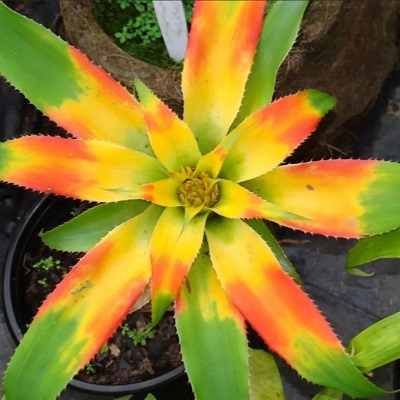


Neoglaziovia
Neoglaziovia is a genus of plants in the Bromeliaceae family, with three known species that are all found in the Atlantic Forest biome in southeast Brazil. The genus is named after Auguste François Marie Glaziou, a French landscape designer and bromeliad collector. Neoglaziovia plants have succulent leaves and purple or violet flowers. One species, Neoglaziovia variegata, has green leaves on the upper side and wide, white cross banding on the underside. Though rare in cultivation, Neoglaziovia is worth collecting when available for sale.


Neoregelia
Neoregelia is a genus of flowering plants in the Bromeliaceae family, native to South American rainforests. They are epiphytic plants, meaning they grow attached to the branches of trees. Their roots serve as hold-fasts and are adapted poorly to absorb nutriment, which is instead obtained through leaf litter, animal droppings, and rainfall that collects in the central cup exhibited by most species.
Neoregelias have broad, flat leaves marked brightly with red, purple, or yellow pigments, and they bloom only once in their lifetime. There are about 90 species of Neoregelia that grow wild in South American rainforests, and there are hundreds of hybrids with an amazing variety of sizes, forms, and colors.
They are commonly cultivated as houseplants or in warm climates as landscape plants and are suitable for vivarium culture. They can withstand some gentle, direct sunlight, such as eastern morning exposure, and require ample humidity during the summer growing season by misting. Neoregelia plants are safe to grow outside in USDA plant hardiness zones 9 and 10, but they must be kept indoors as houseplants during cooler months in the rest of the zones in the United States.



Nidularium
Nidularium is a genus of about 25 plants in the Bromeliaceae family, endemic to Brazil. They are often mistaken for Neoregelia due to their similar appearance. Nidularium plants are popular indoor decorative plants for their colorful flowers and foliage. The blushing bromeliad (N. fulgens) is the most well-known species, with white flowers surrounded by bright red bracts.


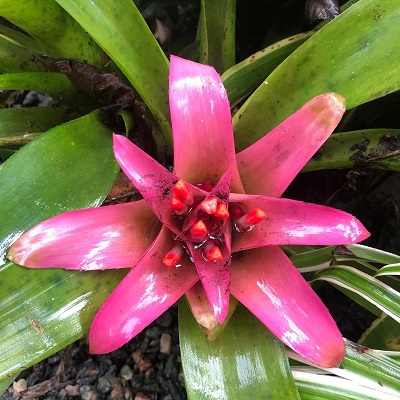
Ochagavia
Ochagavia is a plant genus in the Bromeliaceae family, with four accepted species found in southern and central Chile, including the Juan Fernández Islands. The genus is named after Sylvestris Ochagavia, a former Chilean minister of education.
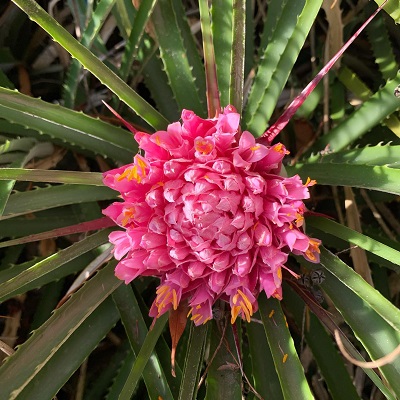


Orthophytum
Orthophytum is a genus of plants in the Bromeliaceae family, found only in the Atlantic Forest biome in southeast Brazil. They are named after their straight growth pattern and are endemic to the Brazilian states of Alagoas, Bahia, Espírito Santo, Minas Gerais, Paraíba, and/or Pernambuco. However, recent DNA testing and technological advances have resulted in many of the original Orthophytum species and cultivars being reclassified under new genera.



Pitcairnia
Pitcairnia is a large genus of plants in the bromeliad family, with 391 different species. They are primarily found in South American highlands and are the second most prolific genus of the family after Tillandsias. Most Pitcairnias prefer moist areas and grow in the ground or attached to rocks, although some can be found growing as epiphytes in trees. They have drooping leaves, some with spines, and send up tall, brightly colored flower stalks that produce tube-shaped flowers in pinks, reds, oranges, and occasionally yellows and whites. Pitcairnia inflorescence can last from early summer until late fall, and some plants maintain their inflorescence until November.
One unique feature of Pitcairnia is that it is the only genus in the bromeliad family that includes a species, Pitcairnia feliciana, not native to the Americas. This species is found in tropical West Africa and is suspected to have arrived there through seed dispersal by migratory birds. It has thin, sparse leaves with a few spines that increase toward the center of the rosette. Despite this exception, Pitcairnia is primarily found in Colombia, Peru, and Brazil, with a few other species scattered throughout South and Central America.



Portea
Portea is a genus of plants in the Bromeliaceae family, native to the Atlantic coast of Brazil. It includes nine species and produces medium to large plants that thrive in strong light. The foliage is attractive but protected by sharp spines, and the tall inflorescence branches produce stunning blooms of lavender flowers followed by dark purple berries. These plants are frost sensitive but usually survive cold temperatures and bloom in late spring. They grow in full sun and can reach up to 4 ft in height. Their inflorescences are highly decorative and feature delicate colors of lavender and pink, flowering for several months.



Pseudalcantarea
Pseudalcantarea is a genus of flowering plants in the Bromeliaceae family, with its native range from Mexico to Central America. There are three known species: Pseudalcantarea grandis, Pseudalcantarea macropetala, and Pseudalcantarea viridiflora. This genus was first described as a subgenus of Tillandsia before being elevated to full genus status in 2016.



Puya
Puya is a genus of the Bromeliaceae family, consisting of 226 species of terrestrial plants native to the Andes Mountains of South America and southern Central America. Puya raimondii is the largest species of bromeliad known, growing up to 30 feet tall in vegetative growth with a flower spike that can reach up to 33 feet. Puyas are hardy plants that can survive in extreme climates, with long, spiked leaves that form in a round, ball-like rosette. Some Puyas are protocarnivorous, meaning animals can become trapped and entangled in their spines, providing nutrients for the plant as they decompose.
Puyas grow very large but slowly, taking years and even decades to produce a flower spike. They are monocarpic, producing only one flower spike before eventually dying, but they also produce many offsets and often grow in large colonies. The genus is divided into two subgenera based on the presence of a sterile inflorescence at the branch apex in Puya, which is fertile in Puyopsis. Puyas are not related to yuccas, agave, or other succulent plants, but adjust to arid conditions by suspending their growth instead of storing water in their tissues.



Quesnelia
Quesnelia is a group of plants in the Bromeliaceae family, found only in eastern Brazil. The genus contains 22 species and is named after French businessman Edouard Prosper Quesnel. It has two subgenera: the type subgenus and Billbergiopsis.
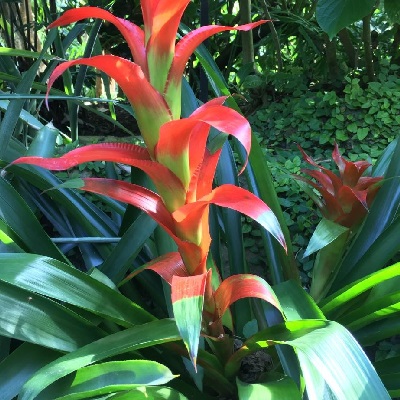


Racinaea
Racinaea is a type of flowering plant that belongs to the Bromeliaceae family and Tillandsioideae subfamily. It was named after Racine Foster, who co-founded the BSI with her husband Mulford B. Foster.



Renealmia
Renealmia is a genus of plants in the Zingiberaceae family found in tropical Africa and America. In Peru, its fruits and tubers are used as sources of indigenous dyes and for medical treatments for leishmania and malaria. In Colombia, it is used to treat snakebites. The plant’s bracts and leaves can serve as phytotelmata, which offer habitat for other organisms by retaining small quantities of water.



Rokautskyia
Rokautskyia is a new genus of flowering plants in the Bromeliad family, native to eastern Brazil. It was established in 2017 and belongs to the Bromelioideae subfamily.


Ronnbergia
Ronnbergia is a genus of plants in the Bromeliaceae family, found in South and Central America. It was named after Auguste Ronnberg, the Belgian Director of Agriculture and Horticulture in 1874. Ronnbergia plants are small to medium-sized, with a stoloniferous habit. Their inflorescence forms a simple spike with blue-pedaled flowers.



Sincoraea
Sincoraea is a type of flowering plant found in eastern Brazil, specifically in the states of Bahia and Minas Gerais. It belongs to the Bromeliaceae family and was first named by Ernst Ule in 1908.



Tillandsia
Tillandsia is a genus of around 650 species of perennial flowering plants in the Bromeliaceae family. They are native to North and South America and can be found in forests, mountains, and deserts. These plants are commonly known as air plants because they are epiphytes and do not require soil for nourishment. Tillandsias have specialized cells on their silvery-colored leaves called trichomes, which allow them to absorb water quickly from surfaces such as telephone wires, tree branches, and bare rocks. Most Tillandsia species are epiphytes and aerophytes, meaning they live on the branches of trees, in deserts, or on other substrates that are not saturated with water for long periods.
Tillandsia are herbaceous plants that exhibit various physiological and morphological differences. They have root systems designed to anchor to other plants or substrates and modified trichomes for water and nutrient intake. The leaves of Tillandsia species are close together in rosettes, forming a funnel for collecting water. The flowers are typically vibrant colors and are produced on a stalk or several stalks. The bright colors attract pollinators such as moths, hummingbirds, and bats. The seeds have a parachute similar to a dandelion.



Ursulaea
Ursulaea is a genus of plants in the Bromeliaceae family, with two known species found only in Mexico. Some experts consider it to be a synonym of Aechmea. The genus is named after Ursula Baensch, a plant breeder and co-author of Blooming Bromeliads.


Vriesea
Vriesea is a genus of flowering plants in the Bromeliaceae family that contains some of the largest bromeliad species. These tropical plants are native to Central and South America but are grown as indoor plants throughout the world. Most Vrieseas are epiphytes and grow soil-less on trees, taking in nutrients through a central tank made by a rosette of leaves. The foliage ranges in color from light green to purplish-red and can have variegation or banding. Vriesea flower spikes are often tall, broad, and colored with shades of brilliant red, yellow, and orange. During the growing season, Vrieseas can be fertilized using a slightly acidic fertilizer diluted to a quarter of the recommended strength or less.
The Vriesea genus includes hundreds of different species and many more varieties and cultivars. Vrieseas are popular for their spectacular and long-lasting flower spikes and interesting foliage. Frog species may even go through their whole life cycle in a bromeliad. It is rare that a Vriesea would have both unique foliage and a distinct flower spike. Vrieseas can be grown in pots with a potting medium or on a substrate such as a slab of wood. They can be fertilized twice a month during the growing season, April through October, with a diluted, slightly acidic fertilizer.



Wallisia
Wallisia is a genus of flowering plants in the Bromeliaceae family found in central and southern Tropical America, including Belize, Colombia, and Venezuela. It also grows in Trinidad and Tobago in the Caribbean.

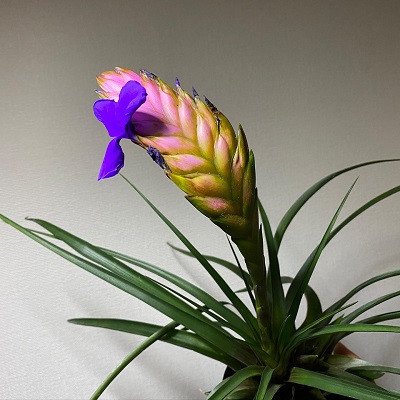

Werauhia
Werauhia is a genus of the Bromeliaceae family named after German botanist Werner Rauh. It belongs to the Tillandsioideae subfamily and includes species that were previously classified as Vriesea and Tillandsia based on molecular evidence.



Wittmackia
Wittmackia is a genus of flowering plants in the Bromeliaceae family, named after German botanist Ludwig Wittmack. They are found in various regions including Mexico, Central America, the Caribbean, and Tropical America. The genus was first described in 1891 and includes species found in countries such as Brazil, Cuba, Guyana, and Venezuela.



Zizkaea
Zizkaea is a genus of flowering plants in the family Bromeliaceae that only consists of one known species, Zizkaea tuerckheimii. It is native to the Dominican Republic and Haiti on the island of Hispaniola. The genus is named after Georg Zizka, a German evolutionary botanist, and the species name honors Hans von Türckheim, a German plant collector.

Related Post:
Are Bromeliads Safe For Cats?
